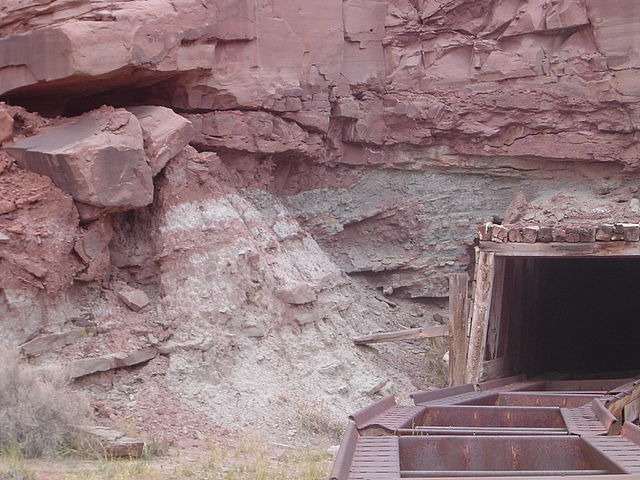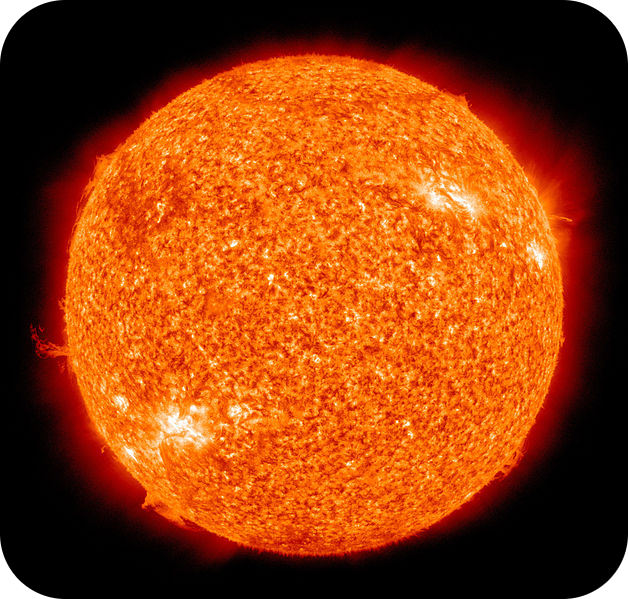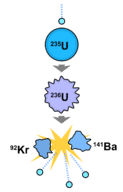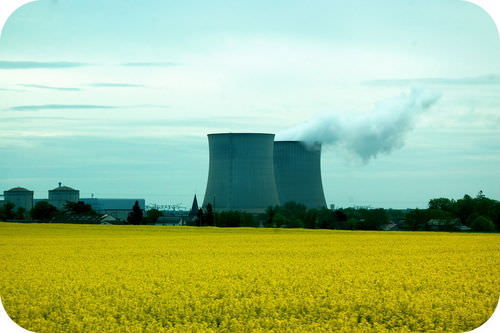READ: Renewable and Nonrenewable Resources
READ: Renewable and Nonrenewable Resources
The source of nearly all energy on Earth is our star, the Sun. Solar energy feeds almost all life on Earth, is trapped in fossil fuels, and is the reason wind blows and water flows. Earth's other big source of energy is the planet's internal heat.
Energy resources are either renewable or non-renewable. Non-renewable resources are used faster than they can be replaced, so the supply available to society is limited. Renewable resources will not run out because they are replaced as quickly as they are used.
Non-Renewable Resources
Nonrenewable resources are natural resources that exist in fixed amounts and can be used up. Fossil fuels — coal, oil, and natural gas — are the most common example of non-renewable energy resources. These fuels formed from the remains of plants over hundreds of millions of years. We are using them up far faster than they could ever be replaced. At current rates of use, petroleum will be used up in just a few decades and coal in less than 300 years.When fossil fuels are burned for energy, they release pollutants into the atmosphere. Fossil fuels also release carbon dioxide and other greenhouse gases, which are causing global temperatures to rise.
Coal is another nonrenewable resource. Most of the electrical power in the U.S. is generated by burning coal in power plants.
Nuclear Power
When the nucleus of an atom is split, it releases a huge amount of energy called nuclear energy. For nuclear energy to be used as a power source, scientists and engineers have learned to split nuclei and to control the release of energy.
When struck by a tiny particle, Uranium-235 breaks apart and releases energy.
Nuclear Energy Use
Nuclear power plants, such as the one seen below, use uranium, which is mined, processed, and then concentrated into fuel rods. When the uranium atoms in the fuel rods are hit by other extremely tiny particles, they split apart. The number of tiny particles allowed to hit the fuel rods needs to be controlled, or they would cause an explosion. The energy from a nuclear power plant heats water, which creates steam and causes a turbine to spin. The spinning turbine turns a generator, which in turn produces electricity.
Nuclear power plants like this one provide France with almost 80% of its electricity. Many countries around the world use nuclear energy as a source of electricity. In the United States, a little less than 20% of electricity comes from nuclear energy.
Nuclear power is generally considered to be a nonrenewable resource because it uses up uranium, which will eventually run out. However, there is some debate about considering nuclear power to be renewable based on ongoing research into breeder reactors and into extracting uranium from seawater. Breeder reactors create more fuel than they use by converting uranium-238 into plutonium-239 which can also be used to fuel a reactor. The use of breeder reactors could extend the life of available uranium for tens of thousands of years. Scientist are also working to develop technology that could extract an endless supply of uranium from seawater.
Nuclear power is clean. It does not pollute the air. However, the use of nuclear energy does create other environmental problems. The process of splitting atoms creates waste, which remains radioactive for thousands or hundreds of thousands of years. This waste must be properly processed and stored. As yet, there is no long-term solution for storing this waste. Periodic accidents involving nuclear power plants have also slowed the development of nuclear power in many countries.

Mi Vida uranium mine near Moab, Utah. Uranium has been mined in southeast Utah at various times since the late 1800's.
Renewable Resources
Renewable resources can be replenished by natural processes as quickly as humans use them. Sunlight and wind are renewable resources because they will not be used up. The rising and falling of ocean tides is another example of a resource in unlimited supply. Metals and other minerals are renewable too. They are not destroyed when they are used and can be recycled. In a dry state like Utah, water is always a concern. It is a renewable resource because it is always being replenished through the water cycle but because we have a limited supply each year we have to be careful with how much we use.
Living things are considered to be renewable. This is because they can reproduce to replace themselves. However, they can be over-used or misused to the point of extinction. To be truly renewable, they must be used in a way that meets the needs of the present and also preserves the resources for future generations. The food we grow on farms and in gardens is renewable. Every year we can plant new crops to replace those we use. Some scientists consider individual trees renewable because once they are cut down they can be replanted and grow again within a few decades. Entire forests are considered nonrenewable because when they are cut down an entire ecosystem is affected, not just the trees.
The following are examples of renewable energy resources:
- Solar power: Panels use solar cells to convert sunlight into electricity.

- Wind power: Windmills transform wind energy into electricity. Currently wind is used for less than 1% of the world’s energy needs but wind energy is growing fast. Every year, 30% more wind energy is used to create electricity. Wind is a renewable resource. Wind turbines like this one harness just a tiny fraction of wind energy.
- Hydropower: The energy of moving water is used to turn turbines (similar to windmills) or water wheels, that generate electricity. This form of energy produces no waste or pollution however it can cause destruction of habitat if dams are created for this purpose.
- Geothermal power: The natural flow of heat from the Earth’s core is used to produce steam. This steam turns turbines which generate electricity.
- Biomass: Biomass production involves using organic matter ("biomass") from plants to produce energy. Using corn to make ethanol fuel is an example of biomass generated energy.
- Tides: Waves in the ocean can also turn a turbine to generate electricity. This energy can then be stored until needed. This image is of a dam of the tidal power plant in the Rance River, Bretagne, France
The use of renewable resources may also cause problems. Some are expensive, while some, such as trees, have other uses. Some cause environmental problems. As the technology improves and more people use renewable energy, the prices may come down. At the same time, as we use up fossil fuels such as coal, oil, and natural gas, these non-renewable resources will become more expensive. At some point, even if renewable energy costs are high, non-renewable energy will be even more expensive. Ultimately, we will have to use renewable sources.
Important Things to Consider about Energy Resources
With both renewable and non-renewable resources, there are at least two important things to consider. One is that we have to have a practical way to turn the resource into a useful form of energy. The other is that we have to consider what happens when we turn the resource into energy.
For example, if we get much less energy from burning a fuel than we put into making it, then that fuel is probably not a practical energy resource. On the other hand, if another fuel gives us large amounts of energy but creates large amounts of pollution, that fuel also may not be the best choice for an energy resource.
Electrical Grids
No matter what the source, once it is generated electricity has go move from place to place. It does so by an electrical grid. Many communities have electrical grids that were built decades ago. These grids are inefficient and have high failure rates.
The electrical grids of the future are likely to be smart grids. Smart grids start with electricity production from one or more power generation sources. The electricity is streamed through multiple networks out to millions of consumers. Smart meters are placed with the consumers. They supply information on the state of the electrical system. Operators know within minutes if the power goes out, rather than having to wait for phone calls from consumers. Smart meters measure consumption and assist consumers in using power when it is more economical, even turning on or off appliances in homes or workplaces to smooth demand. Smart grids are essential for integrating renewable energy sources, such as solar and wind, into the network because they have highs and lows in their supply.
Today we rely on electricity more than ever, but the resources that currently supply our power are finite. The race is on to harness more renewable resources, but getting all that clean energy from production sites to homes and businesses is proving to be a major challenge.
Society’s Use of Resources
Many times when we discuss resources, power is a main concern. As a society we have become very dependent on power for transportation, hospitals, heating and cooling our homes, light, entertainment and preserving our food. Population growth, especially in developing countries, should make people think about how fast natural resources are being consumed. Governments around the world should seriously consider these issues. Developing nations will also increase demands on natural resources as they build more factories. Improvements in technology, use of renewable energy sources and conservation of resources could all help to decrease the demand on nonrenewable resources.
Analyze the graphs and charts to determine the effect of per capita consumption of natural resources on Earth’s systems. Per capita means per person.
Per capita energy consumption (2003) shows the unequal distribution of wealth, technology, and energy use.
Map of average daily dietary energy availability per capita in 2006–2008
Earth Lights vs. Population
World per capita energy consumption
United States energy use over time













